A national folk costume can tell a lot. Based on its patterns, style, and colors, an attentive person with an inquisitive mind can easily read the history of the people, be able to describe their way of life and customs, and draw conclusions about the main occupations of their ancestors. Free, hardworking, peaceful people - this is what the Karelian national costume says about its owners.
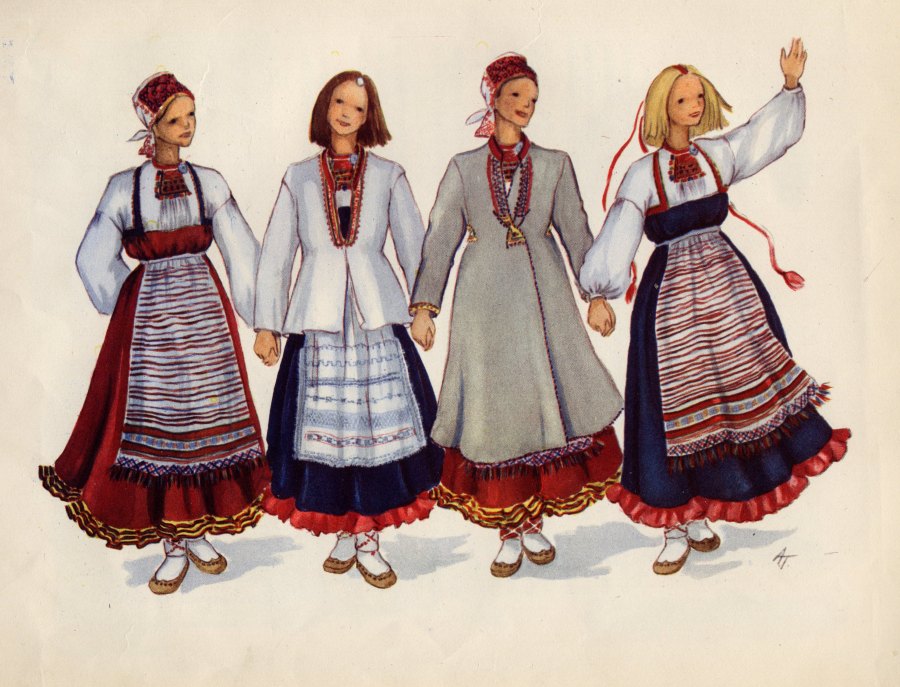
Karelians: features of the national costume
The traditional occupations of the Karelians were agriculture and cattle breeding. They were the basis of everything: food traditions, daily routines and seasonal field work; they dictated to fashionistas of that time what and how to wear.
Karelian women are jacks of all trades. They made the fabrics for their costumes themselves. A loom and a spinning wheel are the first signs of home comfort and warmth. And they wove, spun, sewed and knitted for the whole family, young and old.
Surprisingly, while doing everyday, most often hard physical work, young and experienced Karelians found time for creative needlework. They decorated their products with skillful embroidery and bright threads.Sew using basic chain stitch and cross stitch.
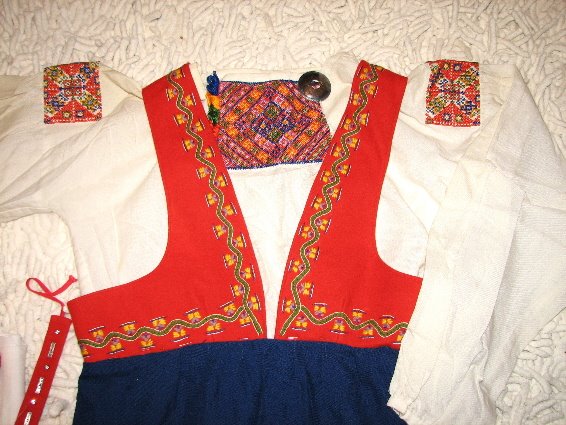
They passed on their skills to their daughters, with special love and patience to their granddaughters, and if they were lucky, to their great-granddaughters.
These traditions, along with elegant attire, they themselves received by inheritance, therefore they were carefully preserved, sacredly revered and brought out on major holidays.
IMPORTANT! All patterns on the Karelian national costume serve as amulets. Images of animals and birds, flowers and leaves, geometric patterns symbolize the forces of earth, water, air and light, the wonderful abilities of representatives of fauna and flora.
In these patterns, their place on the neck, sleeves, wrists, waist and hem lie symbols of health, fertility, wealth, love, protection from evil forces.
Fabrics, colors, cuts
In everyday life, Karelians always used homespun linen and sheep wool fabrics. At fairs they bought cut-outs - bright materials made from chintz.
The main colors of the Karelian costume are bright and life-affirming. Red, blue, green, they reflected the perception of the surrounding nature - green grass, blue sky, red flowers.
Dresses with red trim were considered festive wear. Among the Slavic peoples, the color red symbolizes joy, fun, and success. Casual clothing looked more modest, but still featured embroidered designs, usually in white and beige.
Women's national Karelian costume
The women's national costume was loose-fitting, widened at the bottom, but it was always belted at the waist with an embroidered belt. On weekdays, the function of a belt was successfully performed by a fairly long apron (apron).
Cloth
The clothes of Karelian women are a sundress and an undershirt.The latter shone with whiteness and symbolized purity, and the length of women's skirts flowed exactly to the floor, showing the chastity and modesty of their owners. Karelians could wear a blouse and a flared skirt in the same traditional colors.
This is what a women's national Karelian costume looks like (photo):
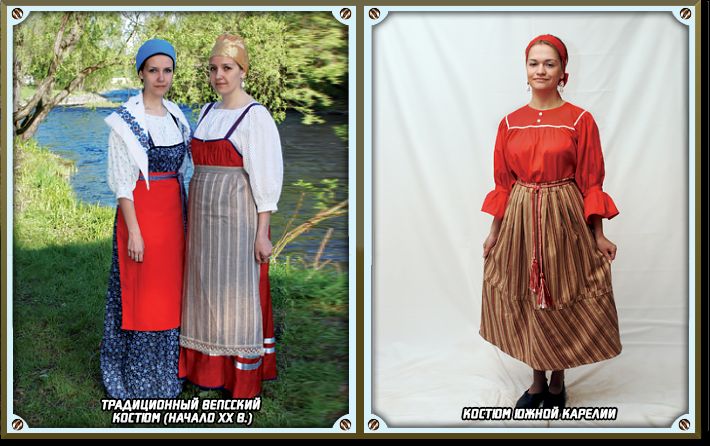
The sleeves were puffy; this effect was achieved by gathering at the bottom of the sleeve or flounce. On the white background of the shirts, clothes in bright red, green, and blue looked advantageous.
In Karelia they also liked to decorate the edges of sleeves, aprons and hems with fringe; there was fringe on scarves as well.
REFERENCE! The Karelian women's shirt had a slit at the back. This makes it radically different from all other national costumes of the peoples of Russia. The cool character of Karelian women is evidenced by the fact that as one of their decorations they wore a hunting knife with a comfortable, beautifully decorated handle around their necks on a chain. Obviously, it was once a protection against wild animals in the forest.
Headdress
A headdress is a mandatory element for women of all nationalities inhabiting Russia. Showing up in society with your head uncovered—“being fooled”—promised the most unpleasant consequences.
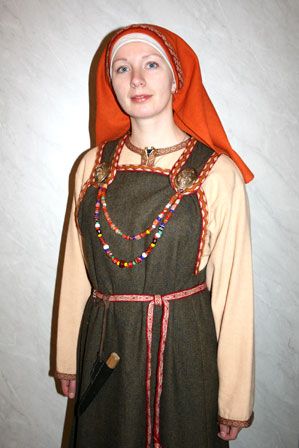
Women of Karelia wore warriors, scarves, and on holidays - kokoshniks. Headdresses embroidered with pearls were considered a special luxury. Only wealthy beauties could afford them.
Unmarried girls decorated their heads with headbands woven from birch bark.
REFERENCE! One of the main accessories of the Karelian national costume is a scarf. For women - a headscarf and a bright floral print scarf draped over the shoulders. The neckerchief served as decoration for men.
Shoes
Karelia in winter is a snow-covered forest fairy tale with bitter frosts. You can’t do without warm, good shoes here.In addition to the traditional Russian bast shoes and felt boots, Karelians wore insulated leather boots with fur, the distinctive feature of which was a long, upturned toe.
Men's national costume
Representatives of the stronger sex took care of their clothes no less than their companions. Blue or green pants stood out as a bright spot. A black, smart vest was worn over a shirt trimmed with embroidery along the neck and sleeves. They completed the outfit and made it complete with a hat or cap, a sash that was used to girdle the shirt.
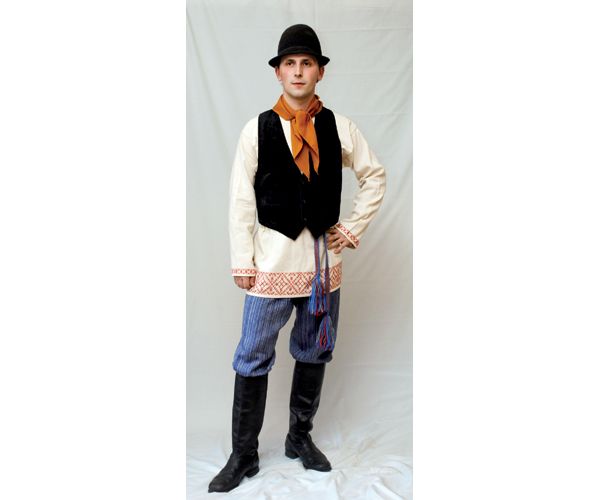 It is very easy to recognize a Karelian man among others - by the neckerchief they wear on weekdays and holidays.
It is very easy to recognize a Karelian man among others - by the neckerchief they wear on weekdays and holidays.
In the Karelian men's national costume you can find both a knee-length white shirt and a red red shirt that is short to mid-thigh. It’s not hard to guess what they wore on special occasions.
Karelian dandies could afford high leather boots with narrow tops.
National clothes today are an integral attribute of folk holidays and celebrations. The stories and traditions of their people are respectfully preserved by modern Karelians in their native republic and traditional Karelian settlements outside its borders.


 0
0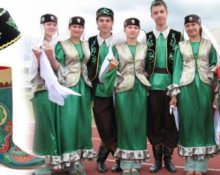
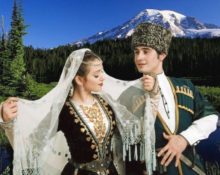
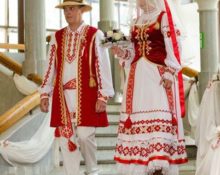
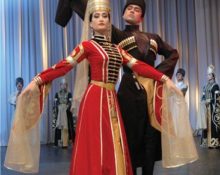
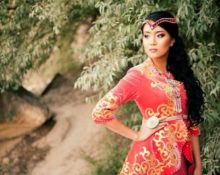
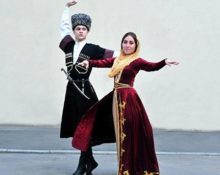

You know, it’s very strange that “only girls from wealthy families could afford pearl jewelry, etc.”etc.”, if only because in the smallest village there is a lake with ten streams))))) Another question is when they were worn, these pearl jewelry.
Juliania, in my opinion, only in the Onga “river streams” are there so many pearls... so in Zaonezhye, all the girls could definitely afford it